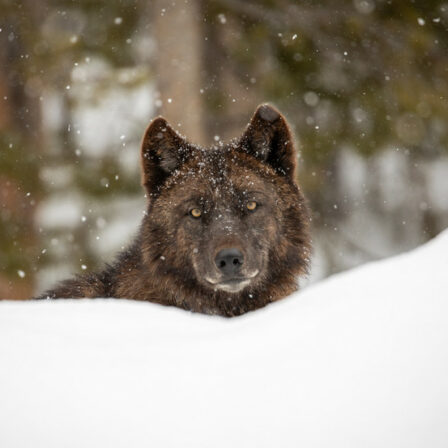For Immediate Release
Contact: Derek Goldman, [email protected], (406) 721-3218; Leda Huta, [email protected], (202) 320-6467
Statement of the Endangered Species Coalition on the announcement by the U.S. Fish and Wildlife Service of final delisting for the Yellowstone Grizzly Bear
“Thanks to the Endangered Species Act, the Yellowstone grizzly bear has made a remarkable comeback from near extinction, and we want to see this conservation success story endure for future generations.
However, we are concerned that the 2016 draft rule and management plans failed to set enforceable conservation standards throughout the Yellowstone grizzly bears’ range. We don’t want to see grizzly bear expansion into suitable habitat curtailed by over-aggressive management once Endangered Species Act protections are removed. Grizzly bears are the slowest reproducing mammal on the planet, and a population decline can take decades to reverse. Therefore, we have been calling on Fish and Wildlife Service and the states to develop adequate management plans for grizzly bears before any delisting is finalized. We will closely review the final rule to ensure there are adequate protections for grizzly bears.”
–Derek Goldman, Northern Rockies Representative, Endangered Species Coalition, Missoula, MT
Background Info:
- In the 1800’s, approximately 50,000 grizzly bears roamed the lower 48 states. Today, fewer than 2,000 remain.
- When listed under the Endangered Species Act in 1975, only around 150 grizzly bears remained in the Yellowstone region.
- There are six grizzly bear “recovery areas” identified by the USFWS. The vast majority of grizzlies live in the Yellowstone and Northern Continental Divide ecosystems.
- According to the Interagency Grizzly Bear Study Team (IGBST):
- Over 80% of all documented bear mortality is human-caused[1]
- Seeds of whitebark pine are an important fattening food available to many grizzly bears during late summer and fall. In years of poor cone production, bear conflicts and bear deaths increase. [2]
- IGBST research clearly shows that bears tend to eat more meat when whitebark pine seeds are not available and that there is an increase in hunter-grizzly bear conflicts and bear mortalities in poor seed years. Extensive areas of whitebark pine mortality in the Greater Yellowstone Ecosystem may exacerbate this trend.[3]
The Endangered Species Act of 1973 was a landmark conservation law that passed with overwhelming bipartisan support: 92-0 in the Senate, and 394-4 in the House. Although some members of Congress are now seeking to weaken this safety net for fish, plants and wildlife on the brink of extinction, recent public opinion research indicates that the law maintains broad, bipartisan, public support even today. The 2015 poll conducted by Tulchin Research found that 90 percent of American voters across all political, regional and demographic boundaries support the Endangered Species Act. And more than 70 percent of voters prefer endangered species decisions to be made by scientists, rather than by politicians in Congress.
[1] Interagency Grizzly Bear Study Team information sheet: https://www.nrmsc.usgs.gov/files/norock/products/IGBST_10InfoSheet.pdf
[2] Ibid
[3] M. Haroldson and S. Podruzny. Interagency Grizzly Bear Study Team. 2010. “Whitebark Pine Cone Production”: https://www.nrmsc.usgs.gov/files/norock/products/IGBST/2010Wbp_FINAL.pdf


